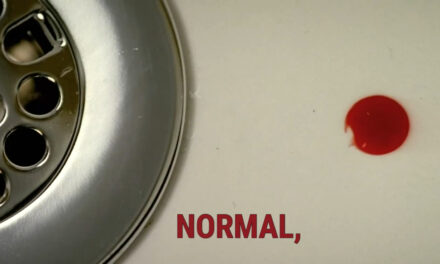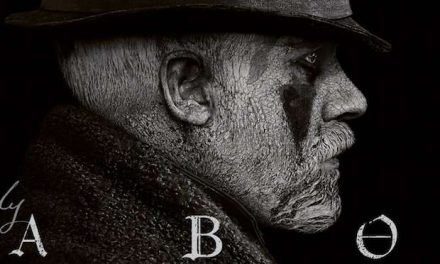August 11, 2015 is the day Pretty Little Liars (2010-) unmasked ‘A’, a day five years in the making: (Spoiler) ‘A’ is CeCe Drake (Vanessa Ray) on PLL. I write about this reveal not just from a personal investment in the show or because it comprises a part of my PhD dissertation, but because of how the reveal divided the fandom and the popular entertainment news media. I write about it for its importance in LGBT television history: PLL already pushes the boundaries and has been lauded for its progressive depiction of same sex relationships to a 12-24 year old demographic (GLAAD Network Responsibility Index 2010-2015). In its current season, PLL has incorporated into its narrative world a transgender villainess. CeCe Drake, nee Charles DiLaurentis who takes the name Charlotte after her transition, was revealed in the first 5 minutes of the mid-summer season 6 finale as being not only the infamous ‘A’, but also being born the eldest DiLaurentis son who transitioned from male to female during her time in Radley Sanitarium. This reveal upended arguably the most popular and widely accepted theory in regards to ‘A’s identity; a theory that was so popular, portions of it were published in a Bustle article (Kaitlin Reilly 20 April 2015 http://bit.ly/1PJiejo). Therefore I investigate the fan responses to this reveal by way of fan produced editorials published on entertainment websites. Each of the published articles come from self-identifying fans. I have opted to explore these particular responses from these types of sources to reduce the likelihood of revealing fan identities. What this blog entry investigates more broadly are the trans-positive and transphobic discourses that emerged immediately after CeCe Drake was unmasked as ‘A’ and how these discourses situated fans into four distinct camps: anti-CeCe because of her transgender identity; anti-CeCe for the negative representations her transgender identity promoted; ambivalence towards CeCe as ‘A’, yet wary about how transgender identity was promoted; and pro-CeCe, because a character was represented as transgender.
While the reveal was a monumental one, the reactions to CeCe as ‘A’ highlighted how this fandom was ill prepared to have a transgender character in the PLL universe. I say this not because they rejected a transgender representation per se, but because they rejected what some fans called ‘jumping on the bandwagon’. They claimed that the producers were following a media trend in order to gain notoriety and a larger viewership, pointing to Caitlyn Jenner, Laverne Cox and ABC Family’s new show Becoming US (2015-) as evidence of this. In light of this, I. Marlene King responded to fans in an interview with Entertainment Tonight arguing: ‘I’m glad that there is a transgender trend anyways, but we certainly did not jump on the bandwagon. I like that we started it three and a half years ago without knowing it’ (12 August 2015 http://et.tv/1KhMThy). King’s response should be taken lightly, because there is no published evidence to corroborate her claim that this reveal was in the works from the start of production for season 3. There is of course textual evidence to support CeCe Drake being ‘A’, which many fans have identified after the fact; but in spite of her public statement, some still feel that she is perpetuating a trend to represent transgender identities on the silver screen.
Broadly speaking, there are four camps that fan responses fall into: complete rejection of the reveal, owing to the fact that A is both CeCe and transgender; rejection of the reveal for further vilifying transgender people as innately inhuman and monstrous; ambivalence towards CeCe as A, yet wary about representing a transgender female in this manner; and, finally, wholly accepting of the reveal and with positive attitudes toward CeCe being represented as transgender. Personally, I fall into the third category, as I was primarily happy with CeCe being A, but concurrently wary about how CeCe’s transgender identity could be construed as the sole reason for her villainess status. However, I would like to highlight that the majority of fans rejected the transphobic responses of some fans within the fandom, particularly when referring to CeCe as ‘it’ or ‘they’.
The fan responses almost mirror the way queer theory has been employed to either reject or praise representation within film and television, which can also be argued to fall into these similar camps. In fact, Heather Hogan, a big name fan and contributor to AfterEllen.com (an LBTQ+ entertainment site) employs a mixed feminist/queer analysis of the final episode to illustrate how a transgender villain can be viewed as both negative and positive. Through her intricately woven argument, Hogan surmises that:
The writers gave these transphobic people that language, just handed it right to them, and now it’s everywhere. Just like Hanna Marin saying she was a-okay with Emily being gay made a generation of young teenage girls okay with themselves/their friends being gay, Hanna Marin saying “he/she/it/bitch” about a trans woman makes it okay for young teenage girls to say that about trans women. Even inside the show, they were misnaming and misgendering Charlotte after she made it clear who she was. (Heather Hogan, 12 August 2015 http://bit.ly/1TuYDlJ)
But she also goes on to contend that ‘We need minority villains (who are not villains because they’re minorities) for true equality’ (ibid). Hogan goes onto state that it is the patriarchy that prevents CeCe from being her true self, which forces her to use deceit and manipulation in order to maintain agency.
Buzzfeed Australia’s article ‘291 Thoughts We Had…’ (Jenna Guillaume et. al, 12 August 2015 http://bzfd.it/1MKKRfj) highlights fan responses that reject CeCe as ‘A’ for its ‘problematic as fuck’ nature, that ‘a show that has told the story of Emily coming out and owning her sexuality would NOT turn a trans character into a liar and a psychopath, right? Like, they know how problematic that is?’ (ibid). This Buzzfeed article was written in a quasi stream-of-consciousness mode that expresses the ideas of the authors as they witnessed events occurring on screen during the finale; in fandom, these types of articles/responses are typically referred to as episode recaps.
In spite of the delicate response from some fans and namely from Hogan and the Buzzfeed staff, the vitriol directed towards the show’s producers and writers surrounding the reveal are what unfortunately stand out the most. As Hogan points out, the show did provide these fans/viewers with the necessary language to devalue CeCe as a person, with many fans claiming that it was ‘sickening’ to watch this ‘it’ masquerading around as a ‘fake woman’. Some fans that fall into this anti-transgender camp vowed to never watch the show again and that 5 years of their lives had been wasted.
While I can merely touch upon the impact this episode and this reveal has had on its viewers and the future of transgender representation across televisual media in this blog, the aim was to shine light on how divisive the responses have been across the fandom. Hogan insinuates that, though PLLis the ‘queerest’ show on television and thus potentially makes ABC Family the ‘queerest’ network (Hogan 12 August 2015), the ways in which CeCe Drake/Charlotte DiLaurentis was presented requires further scrutiny about how transgender identity is discussed and represented within the media. Furthermore, understanding the variety of ways transgender representations are negotiated by its audiences is crucial in understanding where the social barometer points in terms of accepting non-normative identities.
W. Patrick Bingham is a Ph.D student at the University of East Anglia in the field of Film and Television Studies. He received his Masters of Arts with Distinction from UEA in Film Studies in 2012. His dissertation explores teen TV fandom and LGBT representation in Pretty Little Liars (2010-) and is titled Decoding Fandom: Understanding Fan Production through Reader-Guided Textual Analysis. His research interests include Queer Theory, Horror film, genre studies, teen television, gender studies and identity studies.





